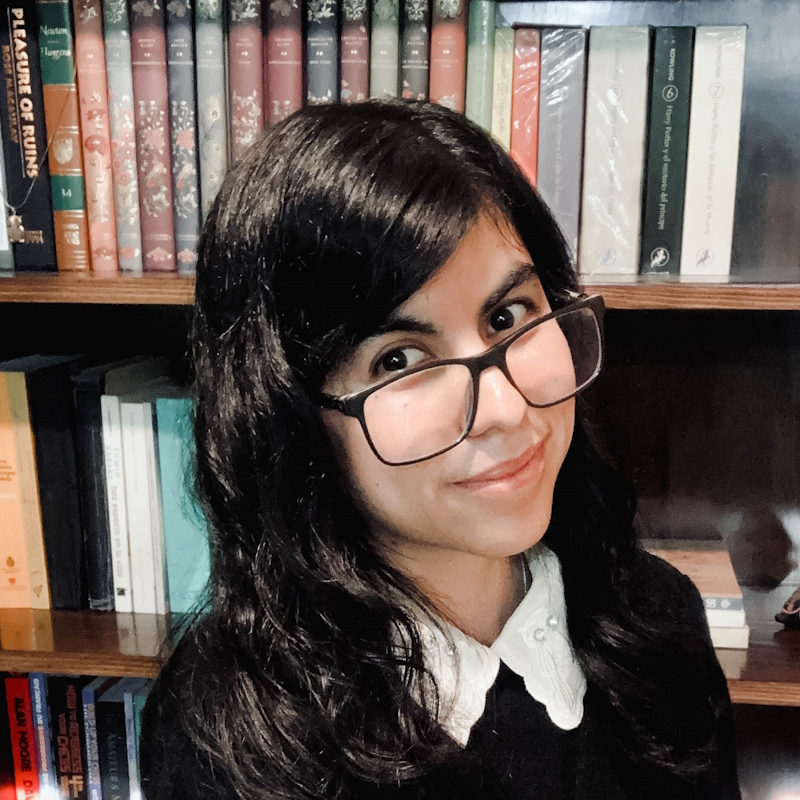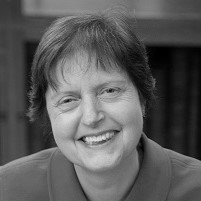Dr Patricia Fara tells the story of Caroline Herschel, concert soprano turned astronomer, unkindly caricatured in Georgian times as ‘The Female Philosopher, smelling out the Comet’.

Caroline Herschel (1750-1848) specialised in self-deprecation. ‘I am nothing, I have done nothing…a well-trained puppy-dog would have done as much,’ she protested. By repeatedly subordinating herself to her brother William, Caroline contributed to being written out of the history books.
However, as the archives of the Royal Society reveal, she deserves a far more prominent role: many of the documents often attributed to him are written in her hand, while she compiled the well-thumbed catalogues of stars that they had recorded and plotted together.
William is celebrated as the lone genius who identified a new planet, Uranus, but astronomy demands collaboration. Caroline’s participation as a team-worker was vitally important, and she spent many cold nights on telescope duty recording observations as well as long hours the next day converting raw data into useful measurements. As the Vice President of the Royal Astronomical Society put it on awarding her a gold medal in 1828, ‘Who participated in his toils? Who braved with him the inclemency of the weather? Who shared his privations? A female – Who was she? His sister.’
Originally from Hanover, William spent many years travelling round England as a musician. Caroline arrived several years later, invited over by him to pursue her own career as a concert soprano. But after a promising start, she was obliged to abandon her musical ambitions and support his new obsession with astronomy. Unsurprisingly, she took over some of the more unappealing responsibilities, such as sieving horse manure in the basement to make smooth beds for metal telescope mirrors.
In addition, Caroline was renowned in her own right for her independent discovery of several comets. Sweeping her small telescope systematically across the heavens, she searched for and found unexpected spots of light that had never been noticed before. Over a decade, she identified a total of eight comets, thus substantially boosting the previous known number of around thirty. As soon as she was sure about the first one, she sent the Secretary of the Royal Society, Charles Blagden, a characteristically modest letter. ‘I venture to trouble you, ‘she began timidly, ‘with the following imperfect account of a Comet…’
Three weeks later, she was summoned to Windsor Castle by George III, who wanted to marvel at this latest arrival in the heavens. One of the royal attendants, the novelist Fanny Burney, abandoned her game of cards to rush into the garden and climb up the steps of the telescope that had been temporarily installed. ‘It is the first lady’s comet,’ she wrote, ‘and I was very desirous to see it.’ The following year, Caroline Herschel was awarded a royal pension to continue her astronomical research.
 British Museum, CC BY-NC-SA 4.0 licence
British Museum, CC BY-NC-SA 4.0 licence
Renown brought notoriety for this woman who had ventured publicly into masculine territory. A month after reporting her third comet, Caroline was caricatured as ‘The Female Philosopher, smelling out the Comet’ (above). The prominent mark on her left cheek probably refers to the childhood illnesses that left her with a small body and a scarred face, while the discarded astronomical quadrant on the ground mocks the Herschels’ abandonment of conventional instruments. The unknown artist has catered to Georgian taste by combining two crude jokes in one image: the sexual connotations of telescopes that peered into places better left concealed, and the scatological associations of just about anything.
At the time, ‘meteor’ described a range of natural phenomena, and was later adopted for the new science of meteorology. Any flashing light in the skies could be called a meteor, a left-over label from earlier Aristotelian models of the universe, which bracketed together everything in the sub-lunar zone stretching from the surface of the Earth to the orbit of the Moon. The Man in the Moon smiles over the scene benignly, while a chubby naked boy squats inside the Sun.
William Herschel had already claimed, in all seriousness, that the Moon was inhabited, its dark patches corresponding to terrestrial forests; for a brief time he even considered the possibility of life on the Sun. Despite his fears of being dubbed a lunatic, such suggestions were not entirely fanciful. Many learned astronomers believed that life existed elsewhere, mainly because they thought that God must have created all the myriad other bodies in the universe for a purpose. (That argument did, however, raise a theological problem about Christ: if there were so many living beings elsewhere, why should He have singled out the Earth?) There were also debates about the physical location of Hell: popular suggestions included the Sun and the tails of comets, which reinforced the reference to sulphurous smells.
Caroline Herschel excelled through subservience and ingratiation, by making herself appear to be the indispensable but invisible assistant. On one unusual occasion, she allowed resentment to pierce through her habitual humility. After meekly thanking the Astronomer Royal for having ‘flattered her vanity’ by printing her much-needed star catalogue, she continued: ‘You see, sir, I do owe myself to be vain, because I would not wish to be singular; and was there ever a woman without vanity?’ But then she displayed an untypical flash of spirit, continuing ‘or a man either? only with this difference, that among gentlemen the commodity is generally styled ambition.’
Was that perhaps a covert snipe at her brother, who had taken advantage of her skills for so many years but then suddenly transferred his attention to the wife that Caroline loathed? The relevant pages have been torn out of her memoirs, so it is impossible to be sure.
You can also read Dr Fara’s ‘In focus’ article on women and the Royal Society on our Science in the Making platform: ‘I do not agree with sex being brought into science at all’.








